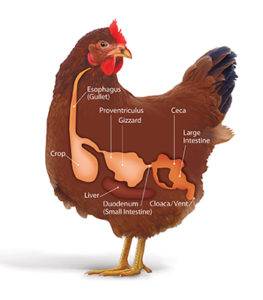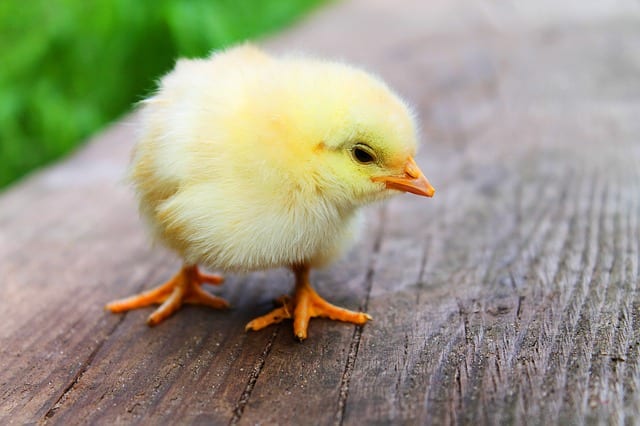With consumers and welfare groups pushing for antibiotic free production of poultry products, farmers are faced with many obstacles. How can farmers reduce antibiotic dependence and still remain profitable? It’s a challenge, for sure, but there has been a flood of research to solve the problem. Scientists and nutrition experts have found that the birds’ gut needs to be healthy so that it can naturally fight off the bacteria that cause illness. Probiotics, prebiotics, and acids have been proven to boost natural immunity, and could be effective in raising antibiotic free birds at reasonable cost.
Within the birds’ guts are “microbiomes”. These biomes vary from bird to bird and are assembled based on the parent stock’s health, food, and environment. When given antibiotics, all of the gut bacteria in the intestine are eliminated. This creates a dependence on the drug in order to keep the flock healthy. To raise healthy antibiotic free birds , the microbiomes, or healthy gut bacteria, need to be restored to their natural state. The first gut bacteria in chicks are a direct result of the bacteria found in the parents, therefore, parents with stable microbiomes make for healthy chicks. Little chick bellies are sensitive to probiotics and prebiotics, and the right combination can kill off pathogens without harming the microbiome.
It’s important to promote good gut health from day one, so chicks should be fed probiotics while at the rearing farm. Adding bacteria, such as lactobabillus farciminis (Biacton) which produces lactic acid, can help chicks develop the right gut environment. Adding short chain fatty acids, prebiotics, and oligosaccharides to water for the first seven days of a chick’s life can also aid in gut development.
Biacton is a feed additive that contains live microorganisms used to improve the gut microflora. In birds, it lowers the intestinal pH from 7.5 to approximately 4.0 by creating lactic acid from the feed. Lactic acid helps to breakdown the nutrients into smaller units to increase their absorption, but it also inhibits the growth of pathogenic bacteria in the digestive tract.
Prebiotics are non-digestible food ingredients that beneficially affect the host by selectively stimulating the growth and activity of good bacteria in the colon. The most common type are oligosaccharides – non-digestible carbohydrates. Prebiotics work in two ways: first, they supply nutrients to beneficial microbes. Second, they trick pathogenic bacteria into attaching to the oligosaccharide instead of the intestinal mucosa. Because the oligosaccharides are indigestible, the bacteria travel along the gastro-intestinal tract and are excreted from the body.
Probiotics are a live microbial feed supplement which improve intestinal balance by means of “competitive exclusion”. Basically, there is competition for attachment sites in the GI tract. The bacteria of the probiotic attach to the intestinal mucosa to form a physical barrier that prevents pathogenic bacteria from forming colonies in the gut. Probiotics also produce antibacterial compounds and enzymes to stimulate the immune system.
All of these factors can work together to ensure that chicks have strong microbiomes and immune systems to fight off infections. But it is also important to remember that chicks have a much better chance of combating bad bacteria if they have limited contact with it. As always, it is important to maintain strict biosecurity practices to limit the introduction of disease to the farm. Antibiotic free poultry production can be both manageable and profitable with the best start, the best diet, and the best care.

